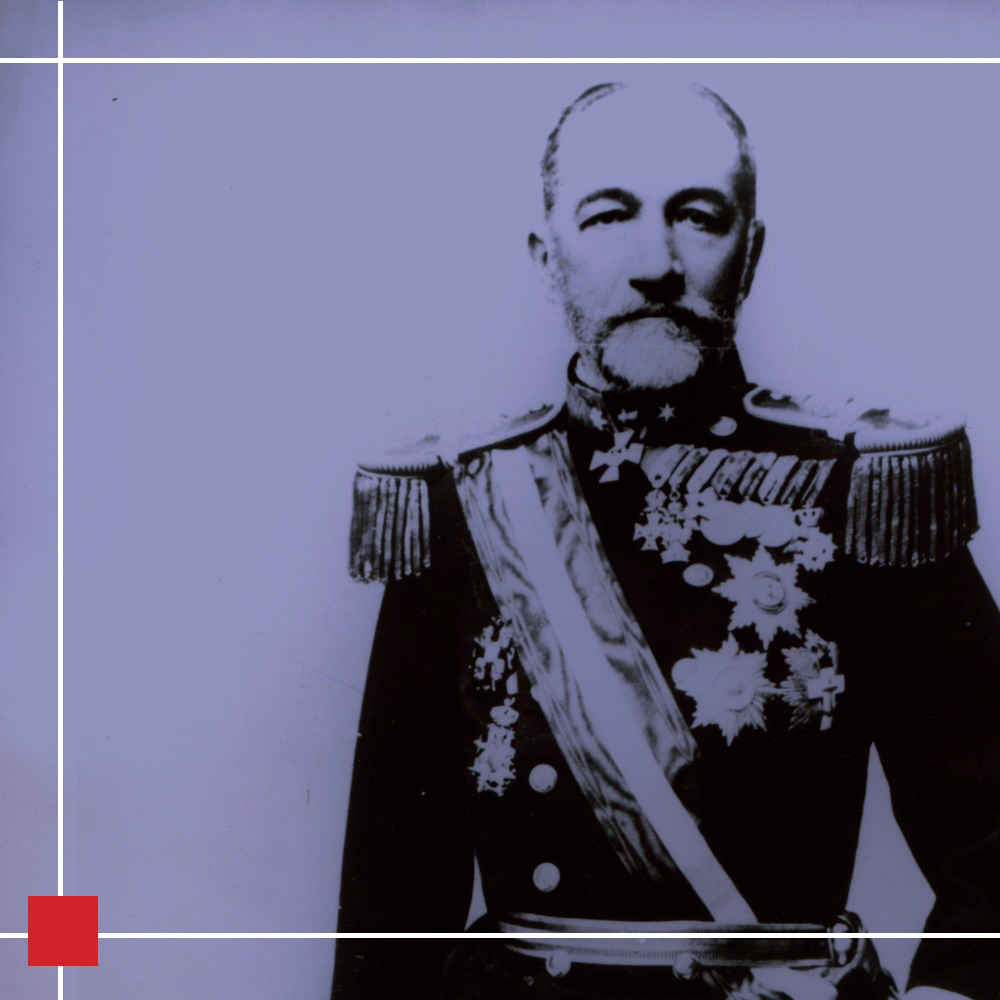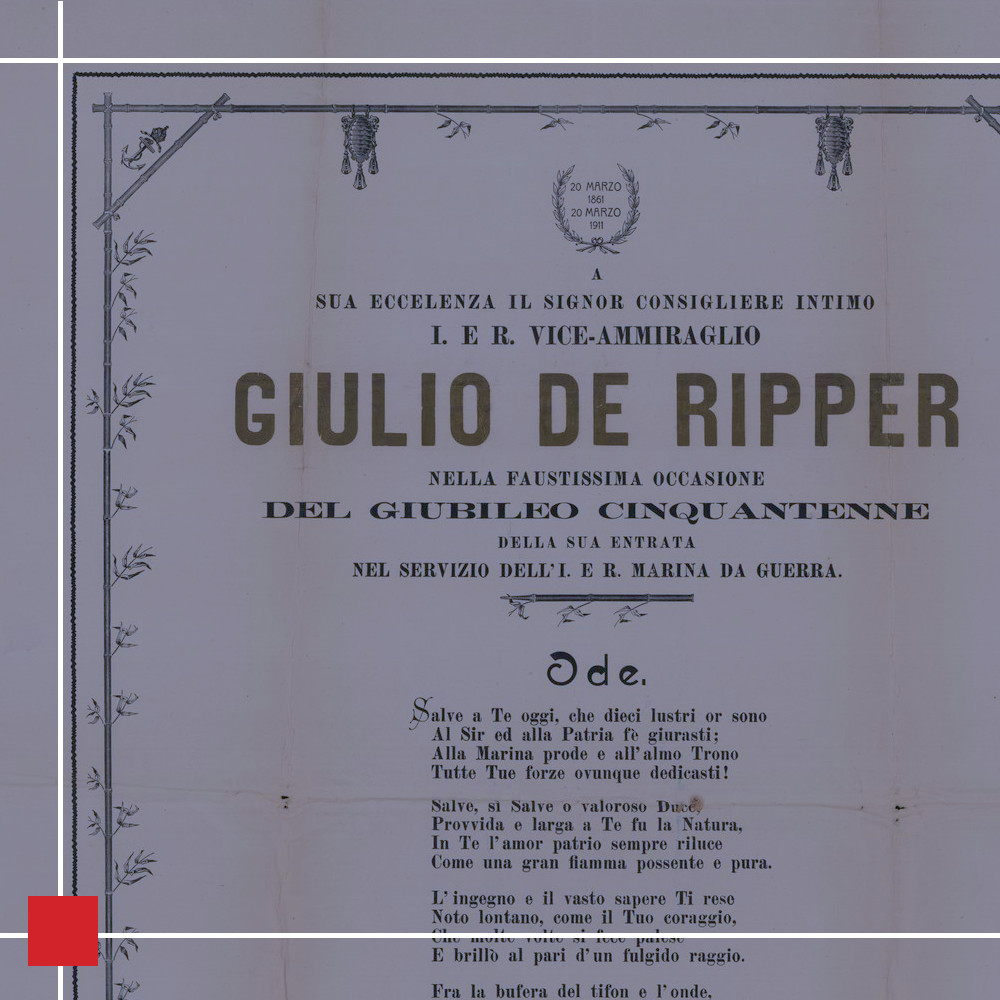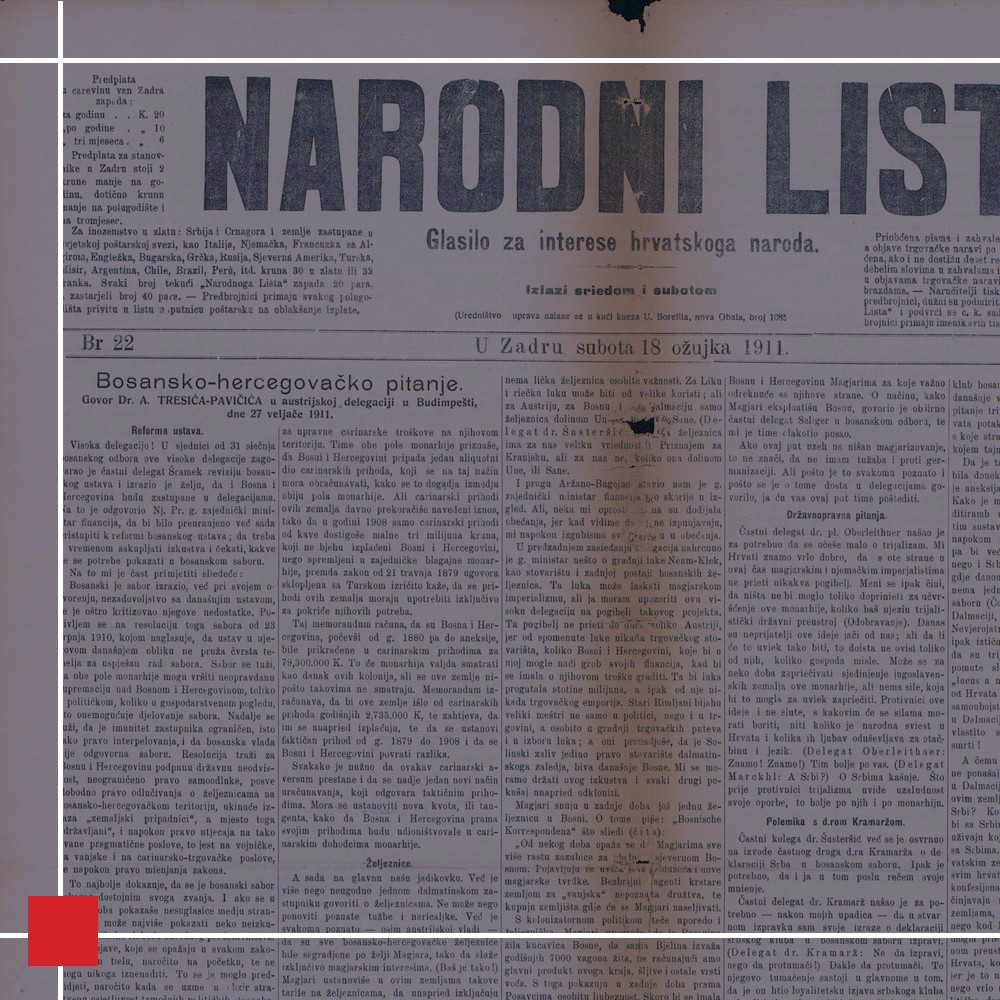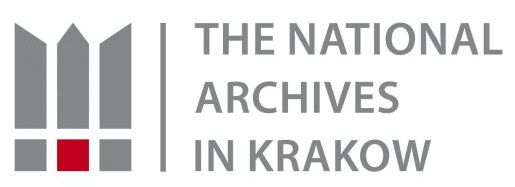CITIZENS, ASSOCIATES AND OUTSIDERS
Residents of the Royal Free Town of Podgórze 1784-1915
VII. FAMOUS PEOPLE FROM PODGÓRZE
Juliusz Franciszek Ripper was born in Podgórze on 6 March 1847. He was the son of Franciszek, a citizen of Podgórze, an industrialist and councillor; and grandson of Franciszek Senior, a citizen of Podgórze and owner of an inn, who arrived there in approximately 1801 from Kunin (Kunewald) in Moravia.
He was educated in the Cadet School in Łobzów in Kraków, and from 1861 in the Maritime School in Fiume. He was a specialist in the area of ships and torpedoes. He obtained the level of first officer in 1869. He was the leader of the “Planet” torpedo gunners, the “Fasana” frigate, and the “Kaiserin und Königin Maria Theresia” armoured cruiser. From 1894 he served in the Navy Department of the Ministry of War, with the position of Chief of Operations. From 1899, he was the commander of the arsenal in the sea base in Pola, in 1901 he was promoted to rear admiral, and at the end of 1905 to vice-admiral and commander of the sea base in Pola. In 1911 he became an admiral, and was regarded as one of the best in the history of the Austro-Hungarian Navy. He retired in March 1913, and died in Vienna on 15 July 1914. He was awarded with, among others, the Order of the Iron Crown, the Order of Leopold, the Military Merit Cross as well as numerous foreign orders.
In the necrology placed in Kraków's “Czas” on 20 July 1914 (no. 288) we can read “(…) He was accustomed to being surrounded by a flotilla, waiting for his order, he lived in a home on Preszgasse in Vienna among photographs of ships, on which he sailed to Cuba, Japan, India and China, as well as photographs of foreign rulers who offered them to him with their signatures as souvenirs. He came from a Polish family. His grandfather built a church in Podgórze; the death of his uncle Charles, a lieutenant in the Italian regiment at Königgrätz, was written romantically: in the moment when his regiment left him against the enemy, he moved alone with his horse against the Prussian army and died among a shower of bullets. (…) The qualities that made Ripper the first Polish admiral in Austrian service were resoluteness, courage and a bold »forward drive« during manoeuvres (…) There were tales of his chivalry when he accepted dignitaries on his ship and of awareness when the ship he led to Cuba during the American-Spanish War entered the line of fire. (…) His brother is a general-auditor in Vienna, and his second brother an engineer in Wadowice (...) In his final years he was the president of the Austrian Scout Association (…)”.
In the spring of 1911, the 50th anniversary of Admiral Ripper's service was celebrated, articles appeared in the press, which Mikołaj Mardešić from Pola sent to the Podgórze Town Hall, writing that “in the dignified town of Podgórze, on Polish soil, on 6 March 1847 Juliusz Ripper first saw the light of day, a son of this noble nation, a credit to our great Slavic family”.
Among the group of famous people from Podgórze, we can find the names of people associated with Kraków, because those born in Podgórze after the unification with Kraków in 1915 were registered with the birthplace of Kraków. Sometimes, a lasting connection with the events of Podgórze may be due to even short-term activity in the area of the town.
Pan Twardowski, whose alchemy works were supposedly located in a cave in Krzemionki.
Albin Franciszek Schoepf (born in 1822 in Podgórze, died in 1886 in Washington), captain in the Austrian army, later a major in the Polish Legions in 1848, he also served in the Ottoman army as an artillery instructor. After a stay in England, he travelled to the United States, where he worked in the Coastal Survey Office, and later in the Patent Office. From 1861, he was the secretary of war in the cabinet of President James Buchanan. After the outbreak of the Civil War, he was promoted to the position of brigadier general, in 1862 he became a division commander, and from 1863 he was commanding officer of Fort Delaware. After the military activities ended, he returned to work in the Patent Office.
Aleksander Kotsis (born in 1836 in Ludwinow, died in 1877 in Podgórze), a painter of portraits, landscapes, interiors and scenes from village life, he was proposed by Jan Matejko for the position of professor in the School of Fine Arts in Krakow.
Adolf Nowaczyński (born in 1876 in Podgórze, died in 1944 in Warsaw), writer, dramatist, satirist, poet, publicist, essay writer, critic, political and social activist.
Juliusz Osterwa, in reality Julian Andrzej Maluszek, (born on 23 June 1885 in Podgórze, died in 1947 in Warsaw), actor and theatre director.
Tadeusz Peiper (born in 1891 in Podgórze, died in 1969 in Warsaw), poet, prose writer, dramatist, literary and theatre critic.
Julian Aleksandrowicz (born in 1908 in Podgórze, died in 1988 in Kraków), son of a merchant from Podgórze, Józef. A graduate of Jagiellonian University, a prisoner of the Kraków Ghetto, a soldier of the Home Army under the pseudonym of “Doctor Hard”. A general practitioner, professor of medical science, medical philosopher and haematologist.
Antoni Józef Stawarz (born in 1889 in Tuchow, died in 1955 in Kraków), from 1914 he served in the Austrian army, on 31 October 1918 he directed the taking of the railway station in Płaszów by the army as well as the barracks in Podgórze, later the soldiers went to the Main Market Square in Kraków. This event is regarded as the beginning of Polish independence.
Buried in the Old Cemetery in Podgórze is Edward Dembowski (1822–1846), a Polish left-wing independence activist, philosopher, literary critic, publicist and writer. The organizer of an unsuccessful uprising in Kraków and the surrounding area – he died on 27 February 1846 in Podgórze, when the Austrian army shot at a patriotic procession which he was leading.

Admiral Juliusz von Ripper (in 1894 he was raised to the status of nobleman by the Emperor)
(ANK, ref. no. A-IV-1469)

“Oda” for Juliusz Ripper by Mikołaj Mardešić from Pola, printed on decorative paper
(ANK, ref. no. P-73, p. 283)

Articles in the press: “Narodni List” (Zadar), “Corriere Adriatico” (Trieste), “Polaer Tagblatt” (Pola), “Naša Sloga” (Pula)
(ANK, ref. no. P-73, p. 295–308)
